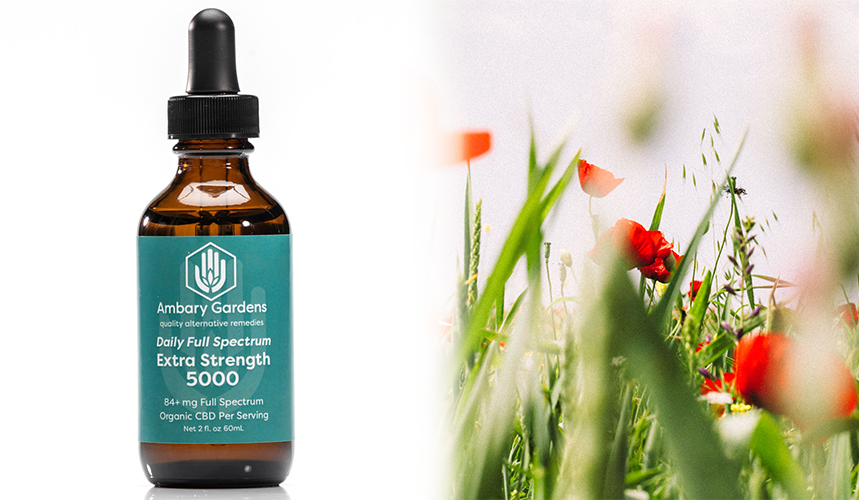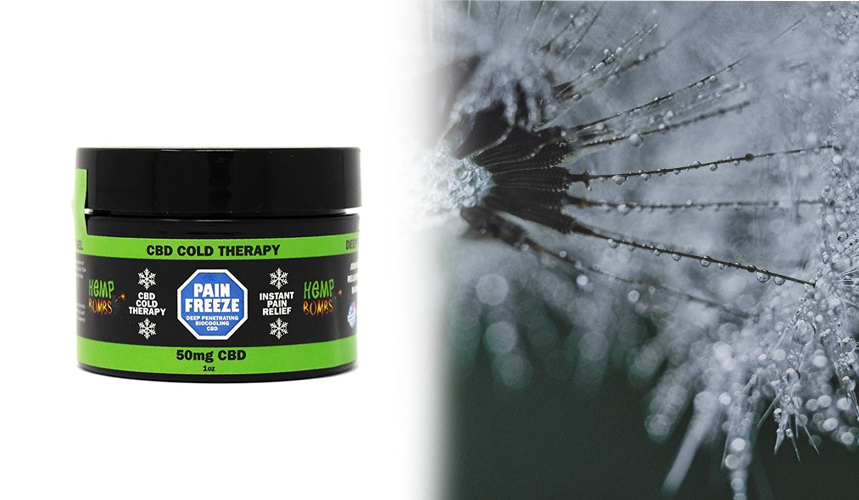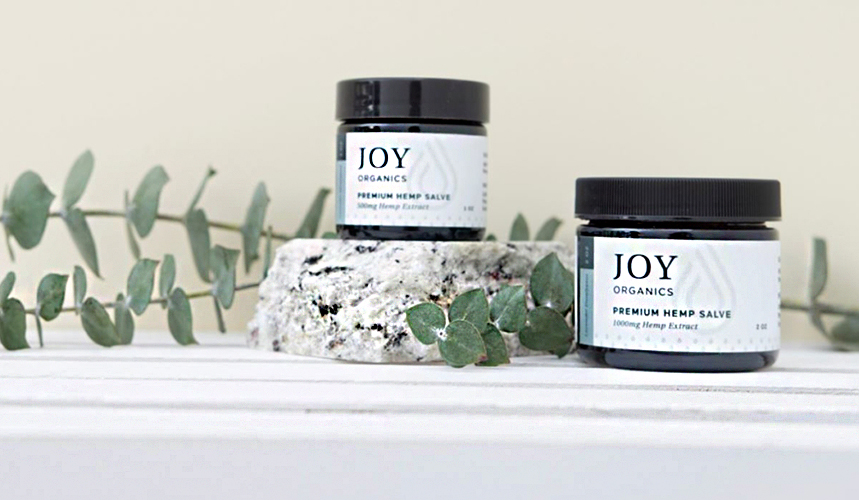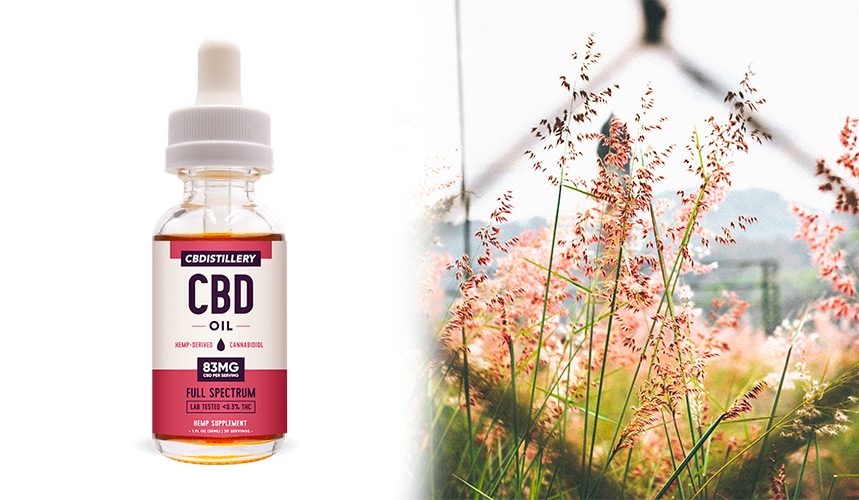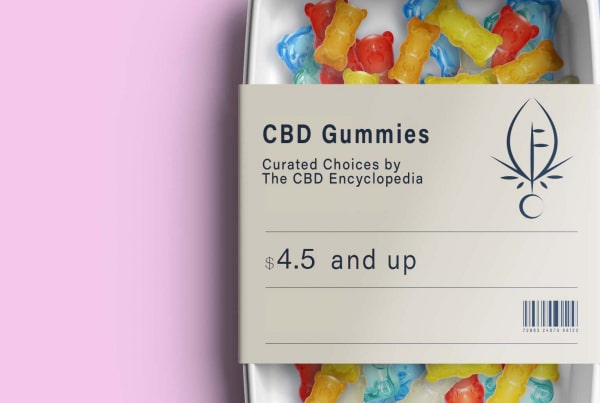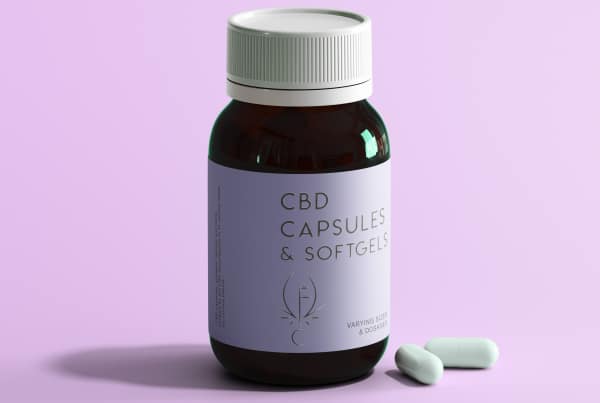The use of cannabidiol is spreading, and just like many herbal medicines, it doesn’t have significant side effects. Cannabis also works with the endocannabinoid system to help treat chronic pain associated with various conditions, including arthritis and multiple sclerosis, among others. Some people are even looking to replace their pharmaceuticals with CBD. There are many options to incorporate cannabis into your life. Some people prefer to smoke the plant via vaporizers, others prefer edibles or tinctures. Read on to learn more about CBD and pain management.
How To Use CBD For Pain Relief
When formulating a regimen of CBD for pain (like chronic or neuropathic pain), it’s important to understand that CBD has not been proven to treat pain. Still, anecdotal reports of success encourage many people to try the plant-based alternative by incorporating regular doses. It may be best used as a preventative first – it can also be used to manage acute flare-ups, but preventative maintenance is most important! Think about it like any other dietary supplement, you want to establish a baseline concentration in your system.
There are a variety of different products made with CBD for pain, but we recommend ingesting full spectrum CBD oil daily in the form of Tinctures or Gel Capsules.
The ingredients in the two products are the same; the only difference between the two is the form factor and dosage – pills vs. sublingual tinctures. The best CBD tinctures and gel caps will combine the power of CBD for pain with a high-quality MCT oil—a key ingredient needed for your body to break down and absorb cannabidiol.
Many people find they still need a safe way to manage acute flare-ups in addition to using the products outlined above for daily pain management. Depending on your preference, there is a couple of suitable option for managing sudden pain flares.
Whether it’s caused by a recent injury, cold weather, or general aggravation – we recommend vaporizing CBD isolate to combat these acute pain flare-ups. The benefit of vaporizing or dabbing CBD isolate is that the relief can be felt almost instantaneously. CBD isolate is 99% pure CBD and provides a wave of relief that can be felt throughout the whole body.
Certain CBD topicals may also provide quick relief from pain flares. Topicals, like CBD salves and creams, penetrate the skin to help manage pain in the bones, muscles, joints, ligaments, and at the skin’s surface.
Often, the best way to manage moderate to severe pain, recurring pain, or pain caused by a number of chronic conditions is to combine different CBD products for all-day preventative and therapeutic coverage.
The Best CBD Products For Pain Relief

Not sure where to find CBD products for pain relief? We’ve got you covered. We understand there’s a staggering amount of options out there which might make choosing difficult. That’s why we’ve done the busy work for you and took the guesswork out of which CBD products make the cut!
What types of CBD products are best for pain relief?
All CBD products fall under three main categories. Full-spectrum (also sometimes called “hemp extract”), broad-spectrum, and isolate. You will see these labels on almost every CBD product. We’ll take a closer look at all three and see why reaching for full-spectrum CBD is the clear winner for pain-relief.
The difference between the three refers to the extraction method used in each. Isolate is CBD isolated from all other compounds in the hemp plant. Broad-spectrum keeps the compounds in hemp plants but removes 100% of the THC (the psychoactive component of cannabis). While Full-spectrum uses all the compounds present in hemp including trace amounts of THC. But it’s not enough to make you feel “high.”
There is a synergy that occurs between THC, CBD, and the other natural compounds in cannabis called “the entourage effect.” To sum the research up quickly, you should always take CBD with all the natural compounds intact. Isolating them from one another will not deliver the best possible effect possible meaning you won’t get the full pain relief you could.
The right dose is dependent on a handful of factors. For example, your previous experience with CBD, the severity of pain and your body weight. The research on CBD for pain relief is still very much in its infancy meaning there are no established guidelines on exact dosage. However, some studies suggest that a higher potency is necessary for lasting pain relief. With that in mind, we’ve compiled the 7 best CBD products for pain relief which all tend to have higher doses of CBD. As with any new supplement or drug, you should use a low dose to start and gradually increase until attaining the desired effects.
1. Best CBD Oil for Severe Pain
Ambary Gardens Daily Full Spectrum Extra Strength 5000
Ambary Gardens is one of our trusted brands and currently offers one of the strongest full-spectrum CBD extracts available on the market. Each dropper contains 84 mg of CBD per dose. If this is your first time trying CBD, you might want to start with closer to 25-50mg per dose with their Full Spectrum 500mg tincture. It’s good to note that you can always control the amount with the dropper’s measurements. There is even a handy guide on the product page about how to increase the dosage according to your direct needs.
2. Best CBD Topical for Sore Joints
Hemp Bombs CBD Pain Freeze
Hemp Bombs CBD Pain Freeze offers instant relief by applying cream straight onto the source of pain. You’ll find a refreshing, cooling effect thanks to the added menthol. You can also apply this rub up to four times per day to soothe aching joints and limbs.
3. Best CBD Cream for Irritated Skin
Joy Organics CBD Salve
Joy Organics has designed a CBD Salve specifically for dry, irritated skin. This salve gently heals and moisturize any chapped skin or roughness. The all-natural CBD oils along with aloe, olive oil and glycerine should be more than enough to nourish and soothe sensitive skin areas while helping relieve any pain.
4. Best All-Purpose Solution for Inflammation
Earth Medicine Recover Muscle Joint Gel
Earth Medicine is another crowd favorite and top reliable brands across their product line. If you need a product that covers a multitude of uses, this 60 mg full-spectrum extract is excellent. Earth Medicine has patented MicroCBD™ + Robus Broad-Spectrum CBD Oil coupled with essential oils for accelerated absorption rates. You have two options for strength, either the 200mg or 400mg dosage. In terms of pain relief, it’s made for post-workout soreness but can help with plenty of other ailments. As Earth Medicine says, you’ll be doing cartwheels in no time.
5. Best on a Budget
CBDistillery Full Spectrum Tincture
Besides having a wide range of products, CBDistillery consistently delivers the best value for your money. They have a plethora of affordable CBD products. This full spectrum tincture is the most affordable product on this list making it a great choice for someone just getting started to figuring out how CBD can help manage their pain. Don’t worry about the low potency since you could always double or triple up until you find your sweet spot.
What is the correct dosage of CBD for pain?
The correct dosage for you depends on a number of factors, like the type and severity of the condition you hope to treat, as well as biological factors like weight and tolerance to cannabinoid-based products.
We suggest starting with 5-10mg per day of CBD for pain. If relief is not felt at this dosage, we suggest increasing it by 5-10mg until the desired effects are achieved. One easy way to do this is with a CBD tincture, which makes it easy to measure accurately metered doses as needed each time.
Other products, like CBD gel capsules, come in pre-measured doses, so starting with the lowest dose (like a ten-milligram capsule) is a great way to understand how much CBD you need to reach the desired level of relief.
Then, you can increase your dose as needed, but keep in mind that these ingestible products provide sustained relief for several hours – many people find they provide relief for the whole day! The one thing to keep in mind with ingestible CBD products is the delayed onset time – it can take up to 90 minutes for the full effects of the tinctures or capsules to be felt.
Dosing for CBD topicals is a bit different, and you should use as much of the product as you need to cover the affected area. Topical products typically work fast, and relief can be felt within 15 minutes and lasts several hours. Simply re-apply as necessary.
Dosing for CBD vaporizers is also slightly different since it can be difficult to properly meter doses with certain vaping devices. Starting with a low-dose cannabidiol vape or CBD additive can help you smoothly experience the fast-acting effects. Because the therapeutic effects of vaporized CBD for pain kick in so quickly, you can easily “stack” doses as needed until the desired effects are reached. Simply increase your dose one “puff” at a time, waiting about 10-15 minutes in between to monitor the effects.
A Note On Sustainability

Our goal at Key to Cannabis is to help our readers find CBD products that support their health and wellness goals, largely through consumer education. This includes not just the science behind CBD products, but their environmental impact as well. As our society grows more conscious of our relationship with (and dependence on) our planet and the ecosystems it supports, the sustainability of ingredients is increasingly important to many people (ourselves included).
We recognize that, while there is value in making better buying decisions, “better” doesn’t really ever mean “perfect.” Our intent is not to shame anyone for making the decisions that they feel are best for them (in fact, those are exactly the decisions we want to support), but to encourage conscious consumption where possible. What that looks like to you is fully up to you, and we always want to empower you to define that for yourself.
Wherever possible, we prefer to select plant-based ingredients for CBD topicals, particularly over petroleum products. This is for two primary reasons: first, petroleum is a finite resource with a massive environmental impact at every stage, from extraction to refining to transportation to consumption. Second, a connection has been established between the long-term use of some topical petroleum products and cancer later in life.
We also prefer plant products to those derived from animals, though we recognize that not everyone feels the same way. Some animal products, like beeswax, lanolin, and gelatin, are important components in the wellness lifestyles of many of our readers, and that’s valid. While it’s true that there are vegan alternatives to these ingredients, they aren’t viable options for everyone. Also, there’s some nuance to the label “vegan.”
The vegan description on a product label indicates that the product contains no animal products. However, it doesn’t necessarily denote a more sustainable product. Microplastics, pleather, plastic fur, polyester, and petroleum products are considered “vegan,” but aren’t exactly more environmentally friendly than their animal-derived counterparts. We don’t mean to imply that the vegan label is meaningless, but we are suggesting that it isn’t the sole criterion by which to measure a product’s quality or sustainability.
CBD For Pain Relief: Benefits And Specific Conditions
Cancer-related pain affects the quality of life, routine activities, eating habits, the ability to get a good sleep at night, and even the way you interact with others. Pain management forms an important part of your overall cancer treatment and most people have attested that cannabis and CBD oil have been helpful in the management of side effects that arise with cancer treatment. Studies are also taking a deeper look into how cannabis can help with cancer beyond just pain management.
Research Regarding Cancer and CBD Oil
Cannabis, which was being used as an herbal remedy for various illnesses for centuries, is now being embraced as a drug used to manage various health conditions. With the exponential growth of the therapeutic use of cannabis products, researchers worldwide have engaged themselves in the investigation of how cannabis can support the treatment of cancer. Generally, the studies include both natural as well as man-made cannabis products such as hemp oil, cannabis oil, and cannabinoids. Cannabinoids, the active ingredients present in cannabis are complex substances derived from the cannabis plant. These help in the regulation of our body’s biological functions. Delta-9-tetrahydrocannabinol, also called THC is helpful in managing chemotherapy side effects. Cannabidiol, also called CBD is another cannabinoid that has the potential to manage painful conditions such as cancer.
Researchers have discovered that our body also creates cannabinoid-like chemicals present in our endocannabinoid system. The cannabinoid receptors named CB1 and CB2 are present in different locations in our bodies and perform various functions. CB1 receptor lies in the cells of the nerve system, especially the brain cells and nerves of the body whereas CB2 receptors are found in the cells of the immune system. According to the researchers, both the endocannabinoid and cannabinoid receptors are involved in bodily functions such as heart functioning, control of activities of the brain, pain, immune system functions, and reproduction. This molecular multitasking has made the receptors to be entailed in a wide range of diseases from neurodegenerative disorders to cancer.
Recent Research on Cannabinoids
The research on whether cannabinoids can be used to treat cancer is ongoing. Scientists often grow cancer cells in the laboratory or animal models are used to study the effect of cannabinoids on the cancer cells. Recently, scientists have found that the cannabinoids have the following effects in the laboratory−
- Stopping cell division
- Triggering cell death through the apoptosis process
- Avoiding the spreading of cancer cells by preventing cells from affecting the neighboring tissues
- Accelerating the process of autophagy that leads to cell death.
These effects are due to the CB1 and CB2 receptors. Recent experiments conducted by administering high doses of THC to mice seemed to reduce the risk of spreading cancer cells. The use of high doses of THC can thus help in killing cancer cells. Thus, scientific research has established positive results after the use of cannabinoids derived from both cannabis plants and synthetic compounds.
Complementary Cancer Therapy with CBD Oil
Generally, cancer treatment deteriorates the overall health of the patient as it leads to side effects that are quite severe. In such cases, the use of CBD oil can act as a complementary therapy to make the patient feel better. Most people undergoing cancer treatment claim that cannabis is helpful in the management of side effects such as pain, poor appetite, nausea and vomiting, and cachexia. There can be pain associated with cancer treatment, which is almost unbearable due to injury to the nerves, pressure upon the internal organs, and inflammation. Cannabis possesses anti-inflammatory properties and thus treats pain. THC works by acting on CB1 receptors and decreasing the pain that results from nerve damage. Apart from pain reduction, cannabis helps in reducing nausea and increasing appetite.
Thus, concentrates oil can help cancer pain management as a complementary treatment because it manages most of the side effects. It helps manage chronic pain, which in turn, enables patients to bear the cancer treatment process in a better way.
CBD for Neuropathic Pain Management
Anyone who has experience with neuropathy knows that it’s a uniquely unsettling experience. The electric tingling, burning, stinging, and pinprick sensations tend to happen in the extremities but can occur anywhere in the body. Nerve pain is unique in that it is caused by damage to the nerves themselves (be it from a slipped disc, a compressed nerve, chronic conditions like multiple sclerosis, or damage sustained in an injury) and not the surrounding tissue. Therefore, neuropathic pain is the result of a misfiring of your body’s pain perception system.
Because the damage is done to the nerve cells, the cells your body uses to relay signals to and from the brain, neuropathic pain can produce strange and unnerving sensations that make sleeping, eating, and other day-to-day activities difficult — or even impossible. Nerve damage is notoriously difficult to heal (though much research is devoted to the topic), and many conventional painkillers are of little help.
Cannabidiol, or CBD, has been shown to impart neuroprotective, anti-inflammatory, analgesic, antioxidant, and antispasmodic effects that may be successfully applied to a neuropathic pain management regimen. Derived from hemp and known for its effectiveness without risk of addiction or dependence, CBD can be consumed orally, inhaled, or applied topically for relief from neuropathic pain.
Because of their ability to manipulate sensations in the skin and body, many people find CBD topical products to be particularly helpful at soothing and alleviating neuropathic pain. Topicals offer faster relief than oral dosing methods, as well as a greater degree of customizability. Supporting ingredients like cinnamon, ginger, peppermint, and capsaicin can change the way nerve cells fire, reducing or eliminating nerve pain when applied to the skin.
While these supporting ingredients open many doors for more effective pain relief, they also raise the risk of adverse reactions, especially in people with sensitive or allergy-prone skin. CBD topicals have a place in neuropathic pain management, but the wrong supporting ingredients for your skin type can reduce (or even entirely negate) their benefits.
Here, we’ll illustrate the physiology of neuropathy before discussing the role of topical CBD in alleviating it. Then, we’ll talk about the best carrier and supporting ingredients to soothe neuropathic pain, including how they work, what they’re best for, and any risks associated with them. Finally, we’ll close with a short note on sustainable ingredients.
What Causes Neuropathic Pain?
Your nervous system is made up of a couple of different key players: neurons, myelin, and glial cells. Neurons are like your body’s electrical wiring, carrying signals to and from your brain. They’re long, branching cells that use charged molecules to move signals down the length of the cell before relaying it to the next one.
Some neurons are covered with a substance called myelin, a protective coating that helps accelerate the movement of chemical messages. Cells called glia help to support the nerves and keep them functioning normally. In a healthy nervous system, these different types of cells work together and ionic messengers flow smoothly across synapses (the gaps between neurons that facilitate chemical communication between them).
Neuropathy occurs when any of these nerve cells are damaged. This damage can result from many different causes. While injuries like herniated discs or nerve compression can cause physical strain and injury to neurons, they aren’t the only possible cause. Chronic conditions like multiple sclerosis, diabetes (even pre-diabetes), and cardiovascular disease can lead to nerve cell damage by changing the body’s chemical environment or causing immune cells to mistakenly attack neural tissue.
So, why is nerve damage such a big deal, and why does it cause such strange and severe pain? Think of your nerves and their myelin like an electrical wire coated with rubber. If that rubber coating is damaged, electricity will no longer flow neatly down the wire but can cause short circuits, sparks, or even stop altogether. Your neurons work very similarly, and a damaged neuron is more likely to send errant pain signals in the absence of a problem; the more severe the damage to your nerves, the more intense neuropathy is likely to become.
How Can CBD Help to Manage Neuropathic Pain?
This may sound a bit bleak so far but stay with us. It’s true that the science of repairing nerve damage is still a way out, but that doesn’t mean that relief is out of reach. While the research is still preliminary, current studies suggest that CBD possesses neuroprotective and antispasmodic properties that may help to calm frazzled neurons and ease neuropathic pain.
The exact mechanisms of this action are still being studied, but what we do know is that CBD has a positive regulatory effect on many of the body’s systems, including the nervous system. This means that CBD can help to reduce the frequency and intensity of neuropathic pain signals by quieting overexcited neurons and reducing inflammation and pain often associated with them. It may also reduce the tingling, burning, stabbing, and prickling sensations common in neuropathy, as well as spasms and involuntary contractions often associated with the condition.
Ongoing research suggests that topical CBD may more effectively manage neuropathy than traditional therapies, including opioid pain relievers. Because of the higher number of supporting ingredients relative to oral CBD, however, topicals carry a relatively higher risk of an adverse or allergic reaction. Their effects can also vary substantially from product to product depending on the carrier and supporting ingredients it contains.
Topical CBD Carrier Oils for Nerve Pain
Carrier oils and other base ingredients have a significant impact on the overall effect of the finished product, and especially its sensory effects. Because sensation is so important to effectively address and calming neuropathic pain, we feel that a bit of education around carrier ingredients can help our readers more easily navigate the baffling variety of topical CBD products available and find the best formula for their needs.
Because CBD is a nonpolar molecule, it doesn’t dissolve in water, a polar molecule. This makes it hard for our bodies to absorb and metabolize — we are over 70% water, after all, and it’s the solute for many of our biological processes. While it isn’t readily soluble in water, CBD does bond well to lipids like oils, fats, and plant butter. When it’s attached to these compounds, CBD is much more readily absorbed by the body, improving its effectiveness drastically. This applies to both topical and oral CBD products. Because of their oily composition and emollient properties, these ingredients tend to support soothing and warming sensations best.
Lipids aren’t the only type of molecule that can help make your CBD dose more bioavailable, though; other molecules with a relatively weak polar charge can also be effective. These compounds might include things like aloe vera gel, different types of alcohol, or glycerol. In contrast to the heavy, oily feel of lipid products, these “polar lite” molecules tend to evaporate more readily, making them ideal for supporting cooling, tingling, or numbing effects.
If your nerve pain tends to feel like burning, stinging, or pinpricks, a cooling product might help to regulate the firing of the damaged nerves, reducing pain. We suggest choosing products made with aloe vera, glycerol, or cetyl alcohol where possible. This is because other alcohols, such as isopropyl, stearyl, or ethyl, can cause damage to the bonds between skin cells over time, increasing dryness and triggering discomfort. Cetyl alcohol, by contrast, is a fatty alcohol derived from coconut that may be less damaging (though it should be avoided by those allergic to coconut).
If you desire something with more warming, relaxing properties to help ease spasms, we recommend opting for products formulated with oils, waxes, or plant butter. Oils from plants like olive, avocado, safflower, argan, jojoba, grapeseed, almond, and coconut can be used alongside plant butter like shea, cocoa, and mango for creamy formulas, while carnauba or beeswax can lend a firmer, more salve-like consistency. We find that more emollient formulas keep warming ingredients like ginger, cinnamon, and capsaicin active for longer periods, extending symptom relief.
If you prefer to refrain from using products that manipulate your sensation and perception, that’s okay! There are plenty of helpful CBD topicals out there that produce no thermal sensation whatsoever. We suggest selecting a carrier based on your skin type and avoiding ingredients that tend to produce changes in tactile sensation. These tend to be things like menthol, capsaicin, cinnamon, and ginger, but can sometimes include milder extracts like lavender or arnica, so listen to your body on this one.
If you want to try topical CBD for nerve pain but have very sensitive skin that balks at most mainstream ingredients, don’t lose hope just yet. Instead of reaching for a topical formula with a lengthy ingredient list, try using an unflavored CBD tincture made with only CBD and suitable carrier oil. You can apply it safely to your skin without worrying about hidden allergies while still reaping the analgesic, anti-inflammatory, and antispasmodic benefits of topical CBD. If you decide to try a topical formula, we suggest a salve or balm, which tend to contain fewer common allergens than cream, lotion, or roll-on formulas.
Neuropathic pain is notoriously difficult to treat, but CBD may be able to provide relief where other treatments have failed. Topical CBD may be especially beneficial for peripheral neuropathy, soothing the tingling, burning, stabbing pain often associated with nerve damage. While CBD has strong therapeutic potential for neuropathic pain, the right ingredients can make a world of difference to your wellness experience. We encourage you to be choosy about what’s on the label of your go-to CBD topicals — when in doubt, reach out to the manufacturer with any questions or concerns.
Topical CBD Supporting Ingredients for Nerve Pain
- Capsaicin The chemical that gives chili peppers their signature spice (and pepper spray its notorious burn), capsaicin certainly has the potential to cause inflammation. However, in small doses, the fiery compound can actually act as an anti-inflammatory, encouraging circulation and reducing pain and swelling. It also causes a warming sensation when applied to the skin (again, well-diluted) that may be beneficial in alleviating some types of nerve pain. Researchers believe that this analgesic effect may be due in part to this sensation, which helps to desensitize the skin and, therefore, the sensation of pain. Capsaicin is used in very tiny doses in topical CBD pain relief products and is generally well-tolerated. However, those with an allergy to peppers should take care to avoid it.
- Clove – While it may not be as effective for deep-seated neuropathy in the fascia, clove oil works very well to soothe the sensation of neuropathic pain in the skin and superficial tissues. Clove is a small but mighty spice with surprisingly powerful analgesic properties. Clove oil has been demonstrated to be as effective as benzocaine at relieving pain when applied topically. There is also some evidence to suggest that clove may have a positive regulatory effect on nerves, helping to regulate their firing and, potentially, reducing the intensity and sensation of pain. Clove has an autumnal, spicy scent and is generally well-tolerated, but should be avoided by those with a clove allergy.
- Eucalyptus – Eucalyptus is widely used for its analgesic and anti-inflammatory properties (and its ability to clear stuffy noses). The extract of the fragrant tree native to Australia, eucalyptus may have a role to play in alleviating neuropathic pain. While the precise mechanism is not yet understood, two factors appear to be at work. Eucalyptus shows analgesic properties when applied topically and may help to reduce the sensitivity of damaged nerves, regulating their firing. Second, the aroma of eucalyptus may have an effect on the central nervous system’s processing of pain signals, reducing pain perception. Those with asthma should be advised that eucalyptus can trigger attacks in some people (though it may be helpful to others).
- Feverfew – The name of this plant comes from its traditional use in treating pain and inflammation. Also known as bachelor’s button, feverfew leaves and flowers produce compounds that reduce muscle spasms and the burning, tingling, pins-and-needles feeling associated with neuropathic pain. It has been demonstrated to possess analgesic and antispasmodic properties when applied to the skin, though it isn’t fully understood how these effects are produced. Emerging research suggests that this may be due to the terpenes, flavonoids, and other bioactive compounds within feverfew extract. If that is the case, these terpenes and other phytochemicals could help to support the dose of CBD in a topical pain reliever.
- Ginger – A piquant favorite in cuisine, ginger’s use as an anti-inflammatory, analgesic, and antiemetic has been well-documented throughout history. Extract from the root of the plant may help to alleviate neuropathic pain and soothe inflamed nerves when applied topically. It can also induce a gentle warming, tingling sensation in the skin, which may help to numb neuropathic pain while desensitizing damaged nerves, regulating their firing. These benefits are also apparent when ginger is consumed(though a separate supplement should be used), indicating that it may be beneficial to the diets of people struggling with neuropathy as well. Those with a ginger allergy or certain sensory integration issues should exercise caution before using topical CBD products made with ginger.
- Lavender – A perennial favorite in aromatherapy and home fragrance, lavender has long been understood to possess anxiolytic, anti-inflammatory, analgesic, and hypnotic properties. When applied to the skin, it acts as an antifungal and antibacterial as well as an analgesic, making it a potentially good option for [recovering from injury]. Research indicates that lavender can help to reduce migraine pain and may work to alleviate the severity and intensity of neuropathic pain. The calming effects of aromatherapeutic lavender may also help to dull pain perception in the central nervous system. Those allergic to lavender should be cautious, as it is a popular component of many topical CBD products targeted at pain relief.
- Peppermint – Peppermint (and other members of the mentha genus like spearmint) contains menthol, a popular ingredient in topical pain products for the cooling sensation it produces when applied to the skin. Some people may find menthol in particular to be helpful in managing their neuropathic pain. This may be due to menthol’s effect on receptors in the skin, sensitizing them to cold sensations and, therefore, potentially alleviating burning or stinging types of pain. Limonene and carvacrol, two other primary components of peppermint extract, have also been shown to help relieve pain and inflammation when used externally. To receive the full therapeutic benefit, look for products that list peppermint extract rather than just menthol among their ingredients — and keep any substance containing peppermint or menthol far away from mucous membranes. Exercise caution with peppermint (and other mints) if you are allergic or have especially sensitive skin.
- Rosemary – A culinary darling popular in cuisine traditions across the globe, rosemary is a shrubby herb rich in terpenes, flavonoids, and other phytochemicals that may be effective against neuropathy. The plant has historically been used against pain, fever, and seizures, and current research suggests that it may possess antispasmodic properties. One study showed rosemary to be effective at relaxing smooth muscles (the muscles you don’t have conscious control over; they contract involuntarily and can cause debilitating pain due to their proximity to organs and bones). This characteristic may make rosemary a soothing antispasmodic addition to topical CBD products for neuropathic pain.
- Turmeric – A brightly-colored root popular in Southeast Asian cuisine, turmeric is exceedingly high in a compound called curcumin. Curcumin has been utilized to combat pain, fever, and inflammation, and research suggests it may be helpful against neuropathic pain as well. While further study is needed, curcumin acts on receptors that can help block neuropathic pain signaling, relieving pain. When applied topically, curcumin may be able to regulate the activity of damaged neurons, reducing the frequency and intensity of neuropathic pain. It’s generally well-tolerated, but should be avoided by those with a turmeric allergy.
CBD and Fibromyalgia
Fibromyalgia is a potentially debilitating condition that causes widespread muscle tenderness, pain, and fatigue. Related to arthritis, fibromyalgia can make even simple activities difficult or impossible. A chronic condition, fibromyalgia can be treated, but not cured. Like many chronic conditions, pain management for fibromyalgia is often difficult and may involve heavy pharmaceuticals.
How Can CBD Help With Fibromyalgia?
Cannabidiol, or CBD, is a naturally occurring compound found in the cannabis plant that has no psychoactive effects. Many states that still ban medical cannabis will make exceptions for CBD due to its multitude of medicinal properties and inability to get a user “high,” like the compound THC is known to do. One ailment CBD is commonly used for is fibromyalgia.
Fibromyalgia is a condition involving multiple manageable yet chronic symptoms, including pain, fatigue, changes in mood, and memory loss. It is believed that the disorder alters the way the brain processes pain signals, thus enhancing all bodily pains. Fibromyalgia affects more women than men and is most common in adults between 40 and 75 years old.
While researchers are not entirely sure what causes fibromyalgia, some studies suggest genetics may be involved. It is also believed that the heightened pain sensitivity associated with fibromyalgia is caused by lower levels of certain brain neurotransmitters, including serotonin and norepinephrine.
Current treatment for fibromyalgia includes pharmaceuticals and self-care, such as taking actions to improve general health. Treatments vary by symptoms, but range from pain relievers, antidepressants (to help treat pain and fatigue), and anti-seizure medications (which can be helpful in reducing certain pains and other fibromyalgia symptoms).
The Science of CBD for Fibromyalgia
The human body comes fully equipped with an endocannabinoid system, which is comprised of different receptors that help the brain communicate with the rest of the body. A 2016 study in Cannabis and Cannabinoid Research presented research that supported the theory that a lack of endocannabinoids, the neurotransmitters that bind to the endocannabinoid receptors and facilitate cell communication, maybe the cause of treatment-resistant, chronic pain syndromes. These may include migraines, irritable bowel syndrome, and fibromyalgia. CBD for fibromyalgia may help to treat this deficiency, thus leading to reduced intensity of symptoms.
The endocannabinoid system sends pain signals between the brain and the body. CBD has been found to alter these nerve pathways, and thus the pain felt throughout the body. This, accompanied by research that shows CBD’s anti-inflammatory effects, may also explain why CBD is an effective treatment for many fibromyalgia patients.
It should be noted that CBD only reduces fibromyalgia symptoms in some patients. Like all medications, CBD is not a magical cure-all and may be ineffective for some people. Further research is needed to understand why it works for some and not others, and advancements in the science of CBD for fibromyalgia are needed before CBD can be officially established as a fibro treatment. Still, some existing research hopes to light the way to discovering the complete therapeutic potential of CBD for fibromyalgia.
Current Research: Study Results
A 2008 study reviewed scientific literature via the National Library of Medicine database and other sources in order to examine how clinical endocannabinoid deficiency could explain why migraines, fibromyalgia, and irritable bowel syndrome are alleviated by cannabis. “Cannabinoids have similarly demonstrated the ability to block spinal, peripheral and gastrointestinal mechanisms that promote pain in headache, fibromyalgia, IBS and related disorders.”
A 2019 study explored the effects of inhaled pharmaceutical-grade cannabis in a randomized placebo-controlled trial. Four different cannabis varieties with different levels of CBD and THC were tested in 20 chronic pain patients with fibromyalgia. “[M] more subjects receiving Bediol [13.4 mg THC, 17.8 mg CBD] displayed a 30% decrease in pain scores compared to placebo (90% vs 55% of patients).”
Recommended CBD Regimen for Fibromyalgia
Fibromyalgia can cause persistent pain that makes it difficult to enjoy even the most pleasant activities. Like many chronic conditions, the pain of fibromyalgia can be difficult to manage. Can CBD help with fibromyalgia and, if so, how? Here, we examine the science of CBD for fibromyalgia. We’ll look at the causes and symptoms of fibro and associated pain before discussing how CBD can help alleviate these symptoms. We will also provide some dosing guidelines to help you incorporate CBD into your fibro wellness routine.
Fibromyalgia is a chronic condition that requires daily treatment. When considering CBD as a treatment pathway, keep in mind that the benefits of CBD for fibromyalgia have not yet been proven. Still, many people find that regular application of CBD, whether systemic or topical, helps improve their discomfort.
For bodily pains, we recommend a topical product like a CBD Lotion that can be applied right onto the affected area. This will offer localized, long-lasting relief when and where you need it. Apply generously and be sure to massage into your skin.
For daily relief and general mood stabilization, we suggest also taking a CBD tincture every morning. Begin with a low dose (one full dropper) and increase as necessary. If you are new to tinctures, try a flavored variety and mix in your coffee or tea.
While CBD for fibromyalgia may be effective for many people, it is important to note that it is not a cure. Many people report that CBD for fibromyalgia also tends to work best in accompaniment with traditional pharmaceutical medications and lifestyle changes. Treatment will be different for each patient, but studies show that CBD may offer a solution to many of the discomforts related to the condition. Talking to your doctor about CBD may be the best first step.
It should also be noted that while the Food and Drug Administration (FDA) recognizes the potential value that CBD may possess, to date they do not yet approve of it as a regulated treatment option. While the Agricultural Improvement Act of 2018 (otherwise known as the Farm Bill) regulated industrial hemp, it did not change the legal status of CBD. Overall, more research and clinical trials will be necessary to fully understand how this naturally occurring substance can aid in the treatment of this chronic illness.
Study Results For CBD And Pain Management
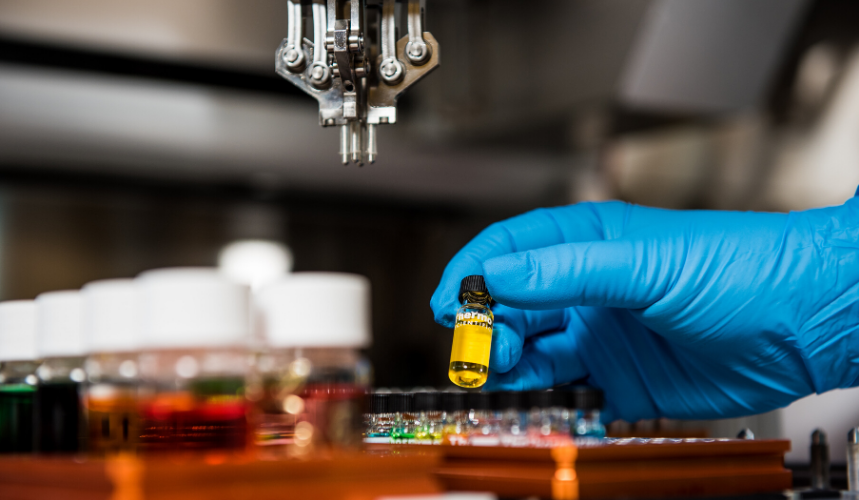
Specific studies regarding the use and pharmacokinetics of cannabinoids for pain management date back over a decade. To date, multiple research efforts have taken aim at explaining the way that cannabidiol may work to help provide pain relief. This broad range of studies explores the use of CBD for pain in different forms—on its own when combined with THC, and in the form of cannabinoid-based pharmaceuticals.
In general, research suggests that cannabidiol could be useful for managing pain due to a variety of conditions, including neuropathic pain, like pain related to multiple sclerosis. Studies also suggest that CBD may be a suitable therapeutic option for pain caused by inflammation, like pain due to arthritis or muscle injury. Research even suggests that cannabinoid-based therapy may be suitable for managing intractable cancer-related pain.
Research related to the use of CBD for pain is still only at its start, but researchers have outlined a clear interest in the anti-inflammatory and neuroprotective properties of CBD, as well as in its use for managing pain related to a variety of neurological and physical conditions. These studies suggest that a variety of different dosing methods, ranging from oral doses to transdermal application, may be appropriate for managing pain related to one or more of these conditions.
1. Cannabinoids for Pain Management
A 2008 article reviewed a variety of research on cannabinoid analgesia and the function of the endocannabinoid system regarding pain mechanisms, as well as multiple clinical trials concerning the use of cannabinoids to manage pain. The articled concluded that “Cannabinoid analgesics have generally been well-tolerated in clinical trials with acceptable adverse event profiles. Their adjunctive addition to the pharmacological armamentarium for treatment of pain shows great promise.”
Learn more: https://www.ncbi.nlm.nih.gov/pmc/articles/PMC2503660/
2. Meta-analysis of Multiple Sclerosis-Related Pain
A 2007 study looked at the effects of cannabinoids on treating the debilitating pain experienced by 50-70% of multiple sclerosis (MS) patients. The double-blind placebo-controlled study concluded that “cannabinoids including the cannabidiol (CBD)/THC buccal spray are effective in treating neuropathic pain in MS.”
Learn more: https://www.ncbi.nlm.nih.gov/pubmed/17257464
3. Two Year Trial on Neuropathic Pain
Another 2007 study evaluated the long-term tolerability and effects of a THC/CBD pharmaceutical known as Sativex. The study concluded that “THC/CBD was effective, with no evidence of tolerance, in these select patients with CNP and MS who completed approximately 2 years of treatment.”
Learn more: https://www.ncbi.nlm.nih.gov/pubmed/18035205
4. Cannabinoids for Neuropathic Pain
A 2014 study stated that “The endocannabinoid system has been elucidated over the last several years, demonstrating a significant interface with pain homeostasis. Exogenous (plant-based) cannabinoids have been demonstrated to be effective in a range of experimental neuropathic pain models, and there is mounting evidence for therapeutic use in human neuropathic pain conditions.”
Learn more: https://www.ncbi.nlm.nih.gov/pubmed/25160710
5. Neuropathic Orofacial Pain & Therapy
Another 2014 study suggested that “Analgesia is one the principal therapeutic targets of the cannabinoid system and many studies have demonstrated the efficacy of cannabinoid compounds in the treatment of neuropathic pain.”
Learn more: https://www.ncbi.nlm.nih.gov/pubmed/25150831
6. Cannabidiol on Nervous System Chemotherapy Efficacy
A 2014 study investigated CBD’s therapeutic potential in treating chemotherapy-induced neuropathic pain (CIPN). Scientists concluded that “adjunct treatment with CBD during PAC chemotherapy may be safe and effective in the prevention or attenuation of chemotherapy-induced neuropathic pain.”
Learn more: https://www.ncbi.nlm.nih.gov/pubmed/24117398
7. Antihyperalgesic Effects of Cannabis on a Rat
A 2008 study found, “that a controlled cannabis extract, containing multiple cannabinoids, in a defined ratio, and other non-cannabinoid fractions (terpenes and flavonoids) provided better antinociceptive efficacy than the single cannabinoid given alone…” This is why the use of full-spectrum CBD oil is more effective in treating pain than taking CBD isolate alone – you want the beneficial terpenes and flavonoids contained in the plant.
Learn more: https://www.ncbi.nlm.nih.gov/pubmed/18618522
8. Non-psychoactive Cannabinoids Modulating Antinociception
A 2011 study evaluated the effects of two non-psychoactive cannabinoids, cannabidiol (CBD) and cannabichromene (CBC), on pain management. The study concluded that “CBD and CBC stimulated descending pathways of antinociception and caused analgesia by interacting with several target proteins involved in nociceptive control. These compounds might represent useful therapeutic agents with multiple mechanisms of action.”
Learn more: https://www.ncbi.nlm.nih.gov/pubmed/20942863
9. Cannabinoids Suppress Inflammation via α3 Glycine Receptors
A 2012 study reported that “systemic and intrathecal administration of cannabidiol (CBD), a major nonpsychoactive component of marijuana, and its modified derivatives significantly suppress chronic inflammatory and neuropathic pain without causing apparent analgesic tolerance…These cannabinoids may represent a novel class of therapeutic agents for the treatment of chronic pain and other diseases…”
Learn more: https://www.ncbi.nlm.nih.gov/pubmed/22585736
A 2010 study looked at the efficacy, safety, and tolerability of THC: CBD extract in patients with intractable cancer-related pain. “This study shows that THC: CBD extract is efficacious for relief of pain in patients with advanced cancer pain not fully relieved by strong opioids.”
Learn more: https://www.ncbi.nlm.nih.gov/pubmed/19896326
Risks Of CBD For Patients With Chronic Pain

Although CBD has been generally labeled as safe by numerous studies and even the World Health Organization, it is important to note that CBD may interact with certain medications. In the same manner that grapefruit interacts with some medications, CBD may affect the absorption of medications that are metabolized by the cytochrome P450 enzyme group. That’s because CBD also relies on this group of liver enzymes for absorption, so there’s a significant opportunity for interaction when medications and CBD are taken simultaneously.
Interactions could include many of the prescription medications taken for pain, like opioids, which often utilize cytochrome P450 pathways for absorption. These interactions are not necessarily dangerous but can cause the effects of the medication to falter, which can be dangerous if the medication is meant to treat severe symptoms or a chronic condition.
The effect CBD has on these liver enzymes is temporary. Often, putting some space between your dose of CBD for pain and your medication may resolve this issue, but it’s always best that you talk to your doctor about CBD before using it, especially if you already take prescription medications or have a chronic illness.
Synergistic Effects Of THC And CBD For Pain
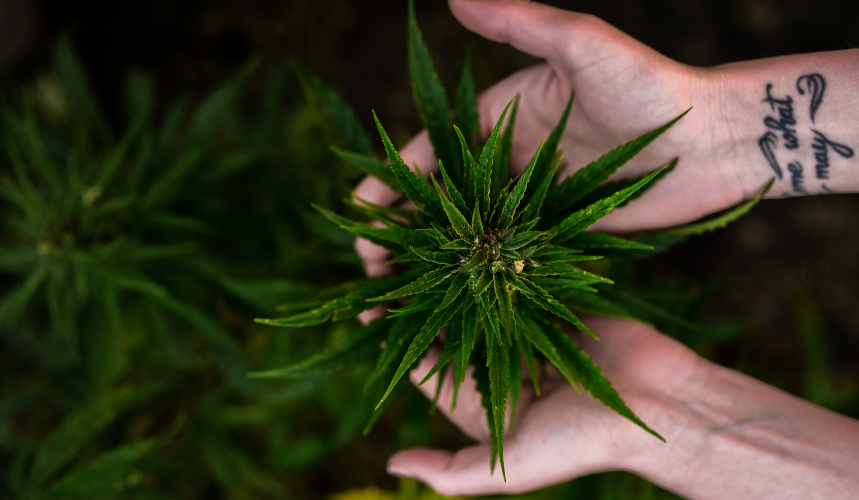
While THC, the component in cannabis responsible for the “high” feeling, gets most of the attention and press (after all, psychoactives tend to be flashy as chemical compounds go), scientists, as well as the general public, are becoming more aware of another component of cannabis with medical properties: CBD. CBD has gained traction in recent years, though its role in the cannabis experience is still not entirely clear. What is clear are its therapeutic benefits, with potential applications in everything from sleep disorders to chronic pain to post-traumatic stress disorder to inflammatory bowel diseases.
In addition to its own properties, there is some evidence to suggest that CBD may work in conjunction with THC and other cannabinoids, producing synergistic effects not produced by the individual components on their own. This theory is commonly known as the Entourage Effect and is widely accepted among cannabis consumer circles. There is some evidence to support a synergistic relationship in particular between THC and CBD, meaning the two compounds may be able to work in tandem to produce effects not present in either’s pure form.
Cannabis Composition
Cannabis is a complex plant, made of over 400 chemical components. Of these, over 113 are classified as cannabinoids, meaning they bind with cannabinoid receptors all throughout the body. You also produce cannabinoids naturally (these are called endocannabinoids and contribute to that feeling of calm and well-being often experienced after exercise, especially endurance activities), which is why you have receptors for them in your central nervous system. The cannabinoids produced by cannabis, known as phytocannabinoids, act in a similar manner to produce similar feelings of relaxation, euphoria, and pain relief.
However, not all cannabinoids are created equal, and each cannabinoid compound acts in a different way to produce different effects. THC is the most notorious of cannabinoids for its psychoactive, euphoria-inducing effects as well as its potential to cause unpleasant side effects such as anxiety and paranoia, especially at high doses. It does produce medicinal effects, particularly relating to pain and inflammation relief, but many people cannot or do not wish to take it at high doses because they do not wish to feel impaired by its psychoactive effects.
CBD is also a cannabinoid, but lacks THC’s psychoactive effects, meaning that no amount of CBD is going to get you high. However, like THC, it also provides medicinal benefits such as relief for chronic pain, anxiety, and nausea, as well as potential benefits for diseases ranging from cardiovascular illness to stroke to diabetes. In particular, CBD appears to be a promising treatment for drug-resistant epilepsy. While much more research is needed, preliminary results are positive and, since it doesn’t carry the potential for abuse, CBD can be ordered online and shipped to all 50 states in the U.S.
In addition to THC and CBD, the third class of chemicals, called terpenoids, maybe helping to boost the effects of other cannabinoids. Terpenoids are naturally found in many fragrant plants and foods (you know the legend that mangoes help get you higher? Terpenoids are the chemical responsible both for the mango’s rich scent and its ability to level up your high), including cannabis. Terpenoids provide cannabis with more than just its skunky aroma, they may also help “prime” your cannabinoid receptors, allowing them to respond more readily to cannabinoids.
So, we know that CBD and THC can be used independently (in the form of isolated concentrates) to produce different effects, but what about using them together, as we do when we consume whole flower and whole-plant concentrates? If you’re a medical consumer, in particular, there are benefits to consuming THC and CBD together, and there is evidence to suggest a synergistic relationship between the effects of THC and CBD in treating a variety of conditions.
Synergy Between THC and CBD
Some studies have hinted at a synergistic relationship between THC and CBD, particularly in medical applications. A 2008 study found that there was evidence to support a synergistic relationship between cannabinoids and terpenes, particularly when treating the following conditions: chronic inflammation, pain, anxiety, and depression; epilepsy; cancer; fungal and bacterial infections; and addiction. The exact mechanism of this synergy is not yet known. It could be that the terpenes helped compound the effects of THC and CBD, it could be that CBD and THC enhanced each other’s effects, or it could be a combination of the two (and possibly other as-yet-unexplored explanations).
Another study, conducted in 2010, provides results that are a bit more conclusive. The study compared treatment protocols for cancer patients for intractable pain. Patients were treated with either pure THC concentrate, pure CBD concentrate, a combination of the two, or a placebo. The study found that CBD effectively relieved the patients’ pain, where the THC concentrate did not deliver the same results. This finding suggests the ability of CBD to bolster the medicinal effects of THC.
This same study also found that the combination of THC and CBD was a suitable replacement for opioid pain relievers, meaning that the use of THC and CBD isolates alone was sufficient to replace opioids in patients’ care and treatment regimens. This study provides evidence that there is a direct synergistic relationship between THC and CBD when it comes to treating chronic pain.
Using THC and CBD: Getting the Most From Your Cannabis
The reality is that most of us already consume THC and CBD synergistically, either through the consumption of whole flower or whole-flower concentrates. However, there are steps you can take to start using this relationship to your benefit in order to get the most out of your cannabis experience while minimizing any unpleasant side effects.
First, pay attention to the THC to CBD ratio in the strain (or strains) you choose. Unless you’re looking to get stratospherically high, you probably don’t need one of those super high-THC strains from the dispensary. Not only are those strains more likely to get you uncomfortably high, but they’re also more likely to result in side effects like paranoia and anxiety. If you’re already someone who suffers from the jitters when you consume cannabis, avoid those heavy hitters in favor of a more balanced herb. If your only option is a high-THC strain, consider seeking out a CBD product to combine with your herb.
There is evidence to support the idea that CBD may serve to blunt some of the negative side effects from THC some consumers experience, particularly anxiety. It may also help to enhance its more desirable effects, such as pain relief and reduction of chronic inflammation. Furthermore, the terpenes contained within cannabis modulate the effects of both THC and CBD, making both compounds more effective.
The bottom line is this: the cannabis plant should be consumed in its entirety rather than isolating it into its various constituents. The most medically effective cannabis products are those that contain the full range of cannabinoids and terpenes—those that capitalize on the Entourage Effect.
4 Tips For Chronic Pain
There are many natural alternatives to help deal with chronic pain from regular exercise, proper diet, to even adding cannabis to your daily routine. We break down five natural tips to help you treat chronic pain.
Regular Physical Therapy

There are so many ways to cope with chronic pain and also treat it, and one of them is attending regular physical therapy sessions. You first need to find the best physical therapist who properly understands the various techniques required. He or she should have in-depth knowledge of how to tailor the therapy to make it suitable for your condition.
Through the therapy, you should be able to know the limits of your pain tolerance. Using that knowledge, the therapist should be able to offer suitable flexibility exercises as well as stretching exercises to fit your needs. Some even incorporate aerobic exercises as well as therapies that help to strengthen your core. Regular physical therapy will not only be able to make your chronic pain subside, but you will also find a deeper relaxed state of mind.
Create a Daily Regimen with CBD
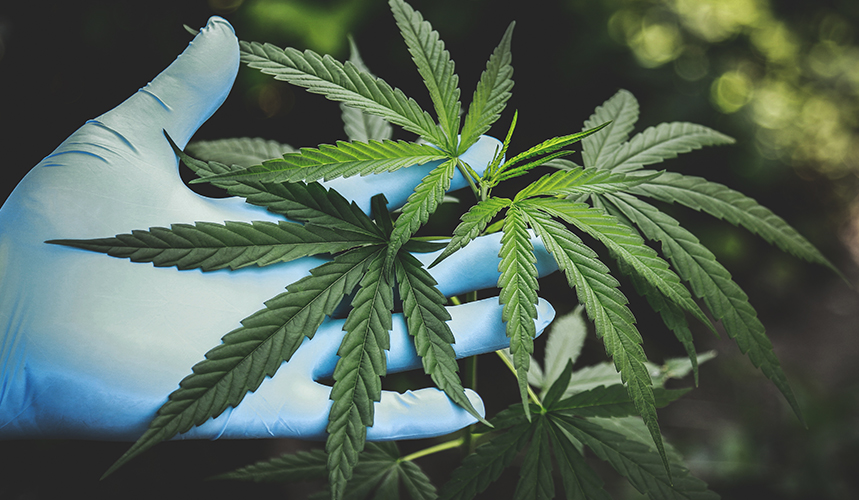
Over the years, cannabis has been proven to be one of the best natural plants in aiding medicinal capabilities. Apart from helping ease symptoms of arthritis, skin inflammations, and diabetes, cannabis can also minimize or treat chronic pains.
The use of Cannabidiol is spreading, and just like many herbal medicines, it doesn’t have significant side effects. Cannabis also works with the endocannabinoid system to ensure that you get adequate sleep, which will help relax the entire body.
CBD products can help treat chronic pain associated with various conditions, including arthritis and multiple sclerosis, among others. Some people are even looking to replace their pharmaceuticals with CBD!
There are many options to incorporate cannabis into your life. Some people prefer to smoke the plant via vaporizers, others prefer edibles or tinctures. Read more on ‘How to Choose The Best CBD Product for You.’
Adjust your diet

Changing your diet is among the many natural tips to treating chronic pain that you should always consider. The right foods and drinks can enhance your mood and digestion thus improving your overall wellbeing. One thing most people do when it comes to their dietary needs is that they tend to ignore the signs of food sensitivities.
Looking into specific food types that reduce inflammation are a great starting place to reducing chronic pain. A well-balanced diet of whole, natural, organic produce such as vegetables and fruits are a great start. Foods that you should consider restricting are red meat, processed foods, and grains. You should also avoid foods that have plenty of fructose. Working with your care practitioner can help you adjust to finding a diet that is beneficial to you!
Daily Meditation

Consider adding a daily meditation practice. It is one of the best ways to clear your mind and ease your chronic pain, plus it costs next to nothing to incorporate. By unlocking stagnant energy, leads to a steady supply of fresh oxygen to all parts of the body. When the body and mind are at ease, your mind will start to take its focus from the deep-rooted chronic pain.
Finding a spiritual teacher who can help you achieve different meditative states easily can be useful. We also recommend looking into adding cannabis to your meditation practice.
While these five natural tips won’t cure your chronic pain but they can surely help ease it. Each of these natural tips is great to add to your daily routine. We recommend starting small, one step at a time with some additional guidance from qualified personnel. These five natural tips will help to ease chronic pain and help you find your way back to freedom.


